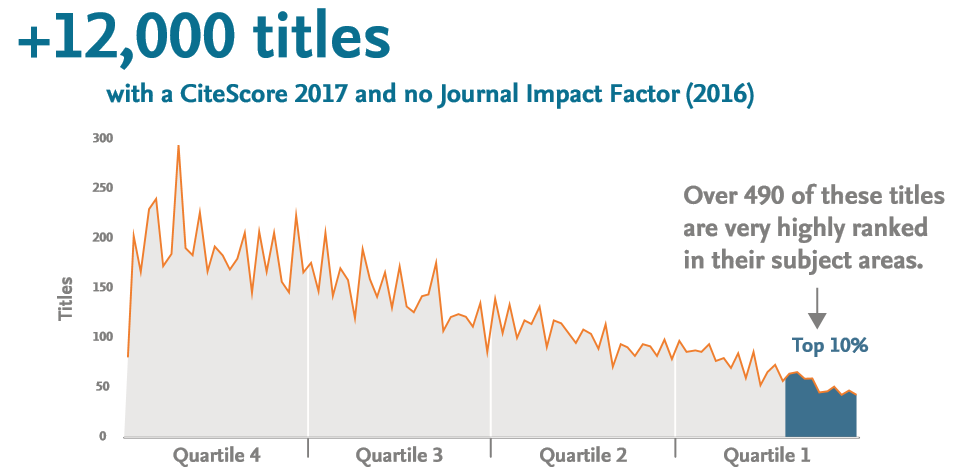CiteScore 2017 metrics now available
First released in December 2016 – and steadily optimized based on user feedback since then – CiteScore™ metrics have established a brand new standard for measuring journal citation impact. Powered by Scopus, CiteScore’s set of metrics evaluate serial citation impact over a three-year period. Now the CiteScore 2017 metrics are available, revealing the latest annual assessments of thousands of scholarly publications.
A user-friendly method for measuring a journal’s impact
CiteScore surpasses the competition with a host of valuable features, including:
Comprehensive coverage: Available for 23,350+ titles on Scopus—including peer-reviewed journals, trade journals, book series and conference proceedings—in 330 disciplines, CiteScore covers 12,000+ more titles than the leading competitor.
Transparency: CiteScore offers complete transparency of the underlying data, allowing anyone to validate a CiteScore value by clicking into the numerator (citations) and denominator (documents). CiteScore metrics are calculated in a very straightforward way, so there aren’t any secret algorithms influencing the results.
Free access: CiteScore metrics are free to access even without a Scopus subscription through the Scopus Sources page and through individual source profile pages on Scopus.
How CiteScore metrics help researchers
Your time is valuable, so you need to choose what you read wisely. With such comprehensive serial coverage, CiteScore can help researchers discover more titles, both within their own disciplines and in other areas of interest. This broadening of your scope can help drive more informed decisions about what to read.
Just as important as knowing which publications to read is knowing which ones to publish in. CiteScore helps guide you to the right titles for your research, so you can submit your work with confidence.
And once that research is published, showcase its citation impact: Use CiteScore to highlight the titles where your research is published, such as including values on your CV and in your grant proposals.
Keep track all year long
You can learn a lot from the CiteScore 2017 values, but for a continuing evaluation throughout the year, check out CiteScore Tracker. That way, you can monitor the progress of the metrics month by month. (Learn how to access the CiteScore Tracker here)


